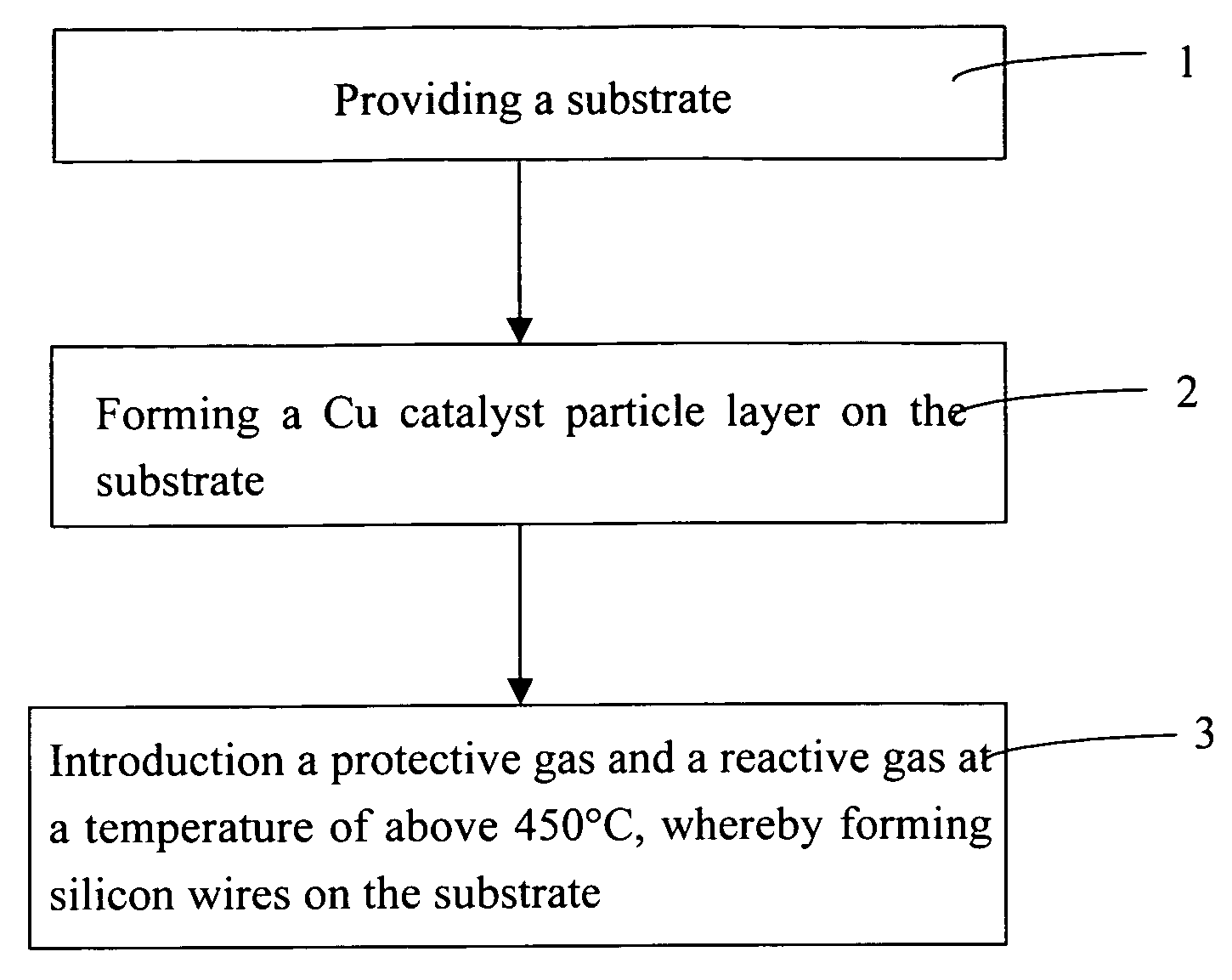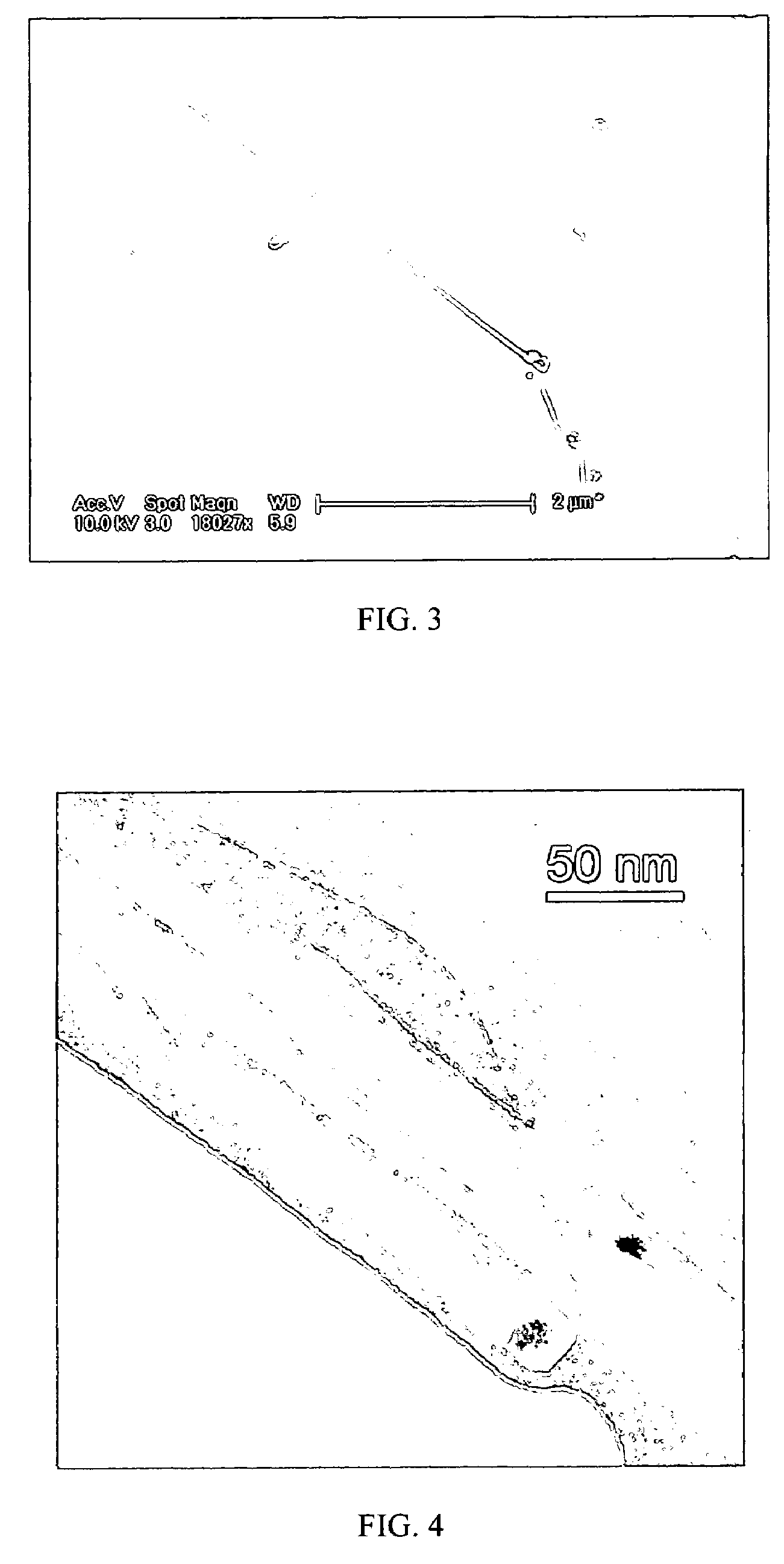Method of synthesizing silicon wires
a technology of silicon wires and wires, which is applied in the direction of crystal growth process, polycrystalline material growth, chemistry apparatus and processes, etc., can solve the problems of increasing environmental control costs associated with it, limited use of silicon wires, and difficult catalytical effect of silicon wires, and introducing cheaper metals, fe and ni selection,
- Summary
- Abstract
- Description
- Claims
- Application Information
AI Technical Summary
Benefits of technology
Problems solved by technology
Method used
Image
Examples
Embodiment Construction
[0023]Reference will now be made to the drawings to describe the synthesizing of silicon wires employing Cu as catalyst according to the present method, in detail.
[0024]Referring to FIG. 1, a substrate is firstly provided. The substrate is advantageously made from a non-metallic material (e.g. silicon, silicon dioxide, quartz, glass, etc).
[0025]Next, a Cu catalyst particle layer is formed on a top surface of the substrate. According to the sizes of the needed silicon wires, the Cu catalyst particles can be selected from one of micro-scale Cu particles, submicro-scale Cu particles, and nano-scale particles, respectively, as the particle size (i.e., diameter) will directly impact the diameter of the wire produced therewith (i.e., a nano-sized copper particle is used to catalyze the growth of a nano-sized diameter silicon wire).
[0026]A method of the formation of the Cu catalyst layer generally includes the steps of: (a) depositing a Cu layer on the top surface of the substrate by a phy...
PUM
| Property | Measurement | Unit |
|---|---|---|
| pressure | aaaaa | aaaaa |
| temperature | aaaaa | aaaaa |
| temperature | aaaaa | aaaaa |
Abstract
Description
Claims
Application Information
 Login to View More
Login to View More - R&D
- Intellectual Property
- Life Sciences
- Materials
- Tech Scout
- Unparalleled Data Quality
- Higher Quality Content
- 60% Fewer Hallucinations
Browse by: Latest US Patents, China's latest patents, Technical Efficacy Thesaurus, Application Domain, Technology Topic, Popular Technical Reports.
© 2025 PatSnap. All rights reserved.Legal|Privacy policy|Modern Slavery Act Transparency Statement|Sitemap|About US| Contact US: help@patsnap.com



